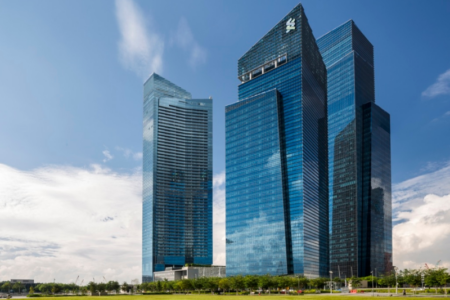It’s no secret that the REIT sector has been under pressure over the past two years.
Interest rates were hiked at the fastest pace in history back in 2022 to 2023, up a staggering 4.8 percentage points.
The US Federal Funds rate now hovers in the range of between 5.25% to 5.5%, the highest in 23 years.
The sharp increases, coupled with soaring inflation, have crimped REITs’ ability to maintain their distributions.
With interest rates possibly getting cut soon, can the sector start relying on acquisitions to grow their distribution per unit (DPU) once again?
Interest rates may tumble soon
REIT investors should breathe a sigh of relief soon as interest rate cuts may be on the cards.
The Federal Reserve chairman, Jerome Powell, mentioned in his keynote address last week that “the time has come for policy to adjust”.
By saying this, he is laying the groundwork for future interest rate reductions although the exact timing and extent were not disclosed.
The direction of interest rates still very much depends on incoming economic data, the inflation outlook, and risks to the US economy.
Earlier this week, a senior central bank official remarked that it is “hard to imagine” that the Federal Reserve will not cut rates in September.
With interest rates at a two-decade high, the worry is that consumer demand and corporate growth may get stunted as individuals and companies hold back from borrowing.
The impending interest rate reductions will help to ease pressure on REITs as the asset class relies heavily on debt financing for both its operational expenses and capital expenditures.
A lower hurdle rate
The big question is – will REITs find it easier to acquire assets should interest rates fall?
To answer this, we need to look at what is known as the “hurdle rate” for acquisitions.
An acquisition will make sense for the REIT only if the net property income (NPI) yield of the property exceeds the risk-free rate.
The risk-free rate is defined as the prevailing interest rate paid on nearly risk-free US treasury bills.
The logic is simple.
The hurdle rate represents the additional risk that the REIT manager takes to achieve a higher return for the REIT, as opposed to parking its cash in treasury bills to enjoy the risk-free interest rate.
Hence, a higher risk-free rate will make it tougher for REITs to conduct acquisitions as they need to scout for properties with even higher NPI yields.
Sporadic acquisitions
Despite the higher interest rate environment, several REITs managed to announce acquisitions.
Back in May 2023, Mapletree Industrial Trust (SGX: ME8U) purchased its maiden data centre in Osaka, Japan, for JPT 52 billion.
The acquisition was both net asset value (NAV) and DPU accretive.
Earlier in March this year, Frasers Logistics & Commercial Trust (SGX: BUOU) acquired an 89.9% interest in four logistics properties in Germany.
Once again, the transaction was both DPU and NAV accretive.
Investors may notice that both REITs are backed by strong sponsors.
Mapletree Industrial Trust has Mapletree Investments Pte Ltd as its sponsor while Frasers Logistics & Commercial Trust’s sponsor is Frasers Property Limited (SGX: TQ5).
The presence of a reputable sponsor makes it easier for the REIT to acquire properties as its sponsor has a pipeline of assets that can be readily injected into the REIT.
AEIs and positive rental reversions
The good news is that REIT investors need not rely solely on acquisitions to help mitigate any DPU declines.
In the absence of acquisitions, REITs can count on asset enhancement initiatives (AEIs) or redevelopment projects to increase their rental income.
Such organic growth methods also help to spruce up the properties to make them more attractive to tenants, thereby improving the tenant retention rate.
An example is the AEI for 51 Benoi Road conducted by Mapletree Logistics Trust (SGX: M44U).
Costing an estimated S$205 million and slated to be completed in the first half of 2025, the redevelopment will see the property’s gross floor area jump from 391,000 square feet to 887,000 square feet.
Over at Mapletree Pan Asia Commercial Trust (SGX: N2IU), the retail and commercial REIT is carrying out a phased upgrading at Basement 2 of VivoCity.
The transformation will increase the retail lettable area by 14,000 square feet and generate an estimated return on investment of 10%.
Positive rental reversions are another catalyst for REITs to chalk up organic rental growth.
AIMS APAC REIT (SGX: OR5U) reported a positive rental reversion of 12.8% for its latest first quarter of fiscal 2025.
CapitaLand Integrated Commercial Trust (SGX: C38U) saw positive rental reversions of 9.3% and 15% for its retail and commercial segments for the first half of 2024, respectively.
Get Smart: An easier time ahead
REITs will undoubtedly have an easier time with acquisitions should interest rates decline.
However, as an income investor, you should also watch out for REITs that can grow their rental income in other ways.
One more important attribute to look out for is each REIT’s sponsor as this can help the REIT to access a ready pipeline of acquisitions.
In our latest report, we dive into five standout Singapore REITs offering distribution yields exceeding 5.5%. Why settle for less? Get more dividends hitting your bank account with our REITs guide. Click here to download for free now.
Follow us on Facebook and Telegram for the latest investing news and analyses!
Disclosure: Royston Yang owns shares of Mapletree Industrial Trust and Frasers Logistics & Commercial Trust.





